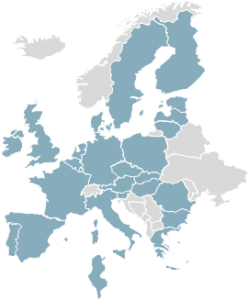On 25 May 2016, the EU agreed new rules on medical devices and in vitro diagnostic medical devices.
 The Netherlands presidency of the Council and representatives of the European Parliament reached a political agreement. It is still subject to approval by the Council’s Permanent Representatives Committee and of the Parliament’s ENVI committee.
The Netherlands presidency of the Council and representatives of the European Parliament reached a political agreement. It is still subject to approval by the Council’s Permanent Representatives Committee and of the Parliament’s ENVI committee.
The agreed two draft regulations are expected to achieve a twofold aim: making sure that medical devices and in vitro diagnostic medical devices are safe while allowing patients to benefit from innovative health care solutions in a timely manner.
Strengthening the system
The agreement reached seeks to ensure the safety of medical devices by two means: by strengthening the rules on placing devices on the market and tightening surveillance once they are available.
The draft regulations establish explicit provisions on manufacturers’ responsibilities for the follow-up of the quality, performance and safety of devices placed on the market. This will allow manufacturers to act swiftly when concerns arise and help them to improve their devices co ntinuously on the basis of actual data. Manufacturers and other economic operators will have clear responsibilities, for instance on liability, but also on registering complaints on devices. The draft regulations also improve the availability of clinical data on devices. The protection of patients participating in clinical investigations will also be strengthened.
Strengthened rules for high risk devices
Certain high risk devices, such as implants, may undergo an additional check by experts before they are placed on the market. Expert panels and laboratories will play a key role in supporting the legislative system, to provide expertise and guidance on clinical aspects to notified bodies, competent authorities and to manufacturers.
The new EU rules also explicitly cover certain devices without a medical purpose but with similar characteristics to medical devices. This concerns for instance fillers and colored contact lenses for cosmetic purposes.
The key impact for manufacturers is that regulatory requirements are much more demanding which require higher upfront investments.
The expected major impact on the EU MDR/IVDR is summarized below:
[divider margintop=”1″ marginbottom=”5″]
[divider margintop=”1″ marginbottom=”5″]
[divider margintop=”1″ marginbottom=”5″]
[divider margintop=”1″ marginbottom=”5″]
[divider margintop=”1″ marginbottom=”5″]
[divider margintop=”1″ marginbottom=”5″]
[divider margintop=”1″ marginbottom=”5″]
[divider margintop=”1″ marginbottom=”5″]
[divider margintop=”1″ marginbottom=”5″]
[divider margintop=”5″]It is expected that the EU Council will endorse the agreement by the end of June 2016. Further, it is expected that the final text of the new regulations will be published by the end of 2016.
The new rules will apply three years after publication for Medical Devices and five years after publication for In Vitro Diagnostics.
In the light of the new regulations for Medical Devices and In Vitro Diagnostics, Medicologic A/S is planning a follow-up seminar in the fall of 2016 where we will analyze the consequences of the new regulations for the Medical Device Industry and suggestions for how to start implementing the new regulations.

[divider]Should you have any questions in relation to the new EU rules, please contact us.
[divider type=”line” margintop=”10″ marginbottom=”10″]
 Randi Hauerberg came on board as Principal Advisor / Team Lead on March 1, 2016. Randi has more than 25 years’ experience within Regulatory Affairs
Randi Hauerberg came on board as Principal Advisor / Team Lead on March 1, 2016. Randi has more than 25 years’ experience within Regulatory Affairs
